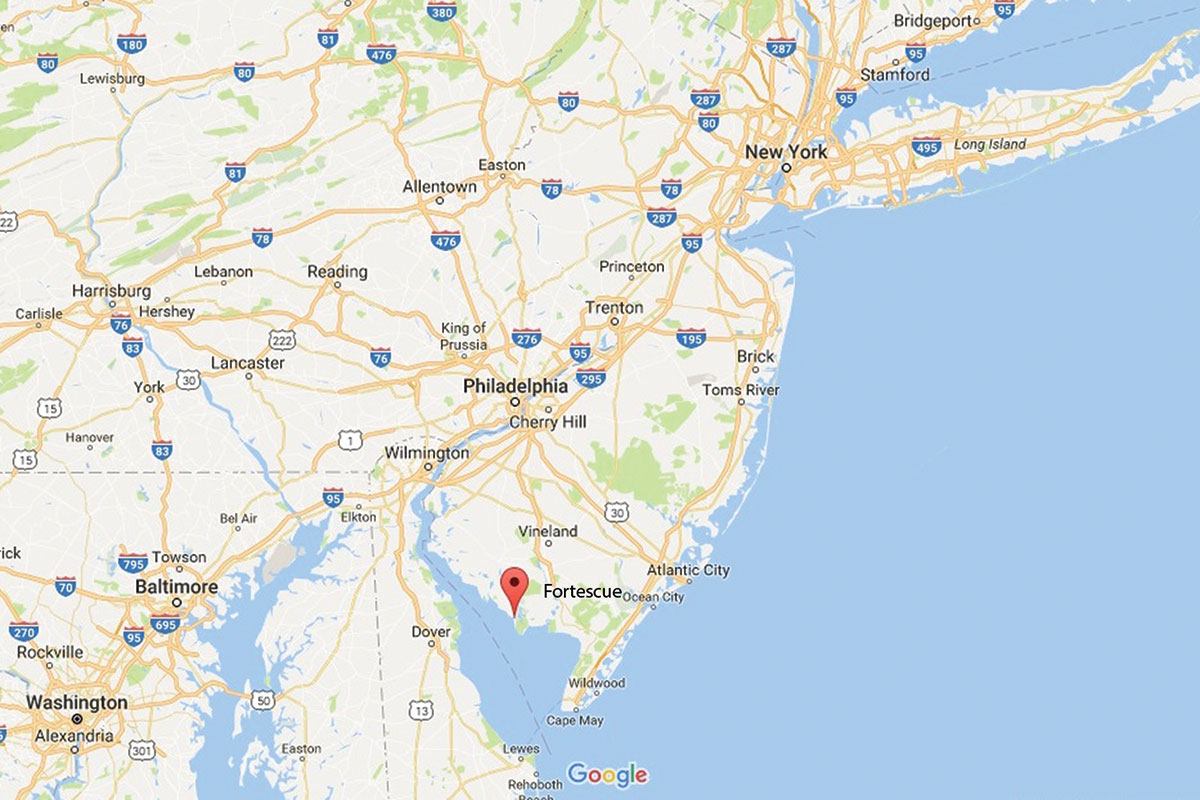

As many of Jersey’s South/Central surfcasters turn up in force at the convergence of the Mullica and Great Bay, roughly 40 miles south as the osprey flies (and arguably a bit closer to the northern migratory arrival of spring stripers) lies Fortescue Beach along the northern bayshore of Delaware Bay. With anglers on the south side of the Delaware already sticking baits from Broadkill to Woodland Beach, and folks in Salem County hitting the artificial warm water around the nuclear plant at Lower Alloways Creek, Cumberland County casters anxiously await the first reports of stripers along the beaches of this Downe Township community (population 400).
Well-known as the “weakfish capital of the world,” Fortescue was in its fishing heyday back in the late ‘70s and mid ‘80s during the epic run of tiderunners. Looking at old family photos as my own greats hit the Fortescue headboats as early as the 1930s – not to mention what I learned from the late Ralph Knisell about local trout and drum – suffice to say Fortescue has been a popular destination for many, many generations of Philly, Wilmo and SW Jersey anglers.
While the weakfish boom may have mostly busted, spring at Fortescue along the open beaches can be worth a look for surfcasters looking for a change of pace. Primarily made up of salt marsh and muddy flats, and fed by a number of creeks and tidal rivers, these waters are prime nursery grounds for striped bass, which find their way into the upper reaches of the river every year.
“The beach bite starts nice and early, sometimes if it’s warm it gets going once we’re allowed to fish again in March,” said Capt. Don Stein, president of the Fortescue Captains Association (856-462-7314). While the “big bite” starts around the Salem and Hope Creek Nuclear Generating Stations in March, Capt. Stein said those fish begin spreading out from shore later in the month and into April, which is when you’ll even start to find the Cape May fleet upriver prospecting for scattered stripers. Cliff Higbee at Higbee’s Bait and Tackle on Downe Avenue in Fortescue (856-447-4157) said that’s also typically when Fortescue Beach is at its best.
“As soon as the Elsinboro bite slows down, up around the plant, that’s when we get the fish and the customers,” Higbee said, adding that the Fortescue bite is later these days than it was in years past. “I’m thinking of a start date of around April 8, though if the conditions warrant I’ll start a week earlier,” he added. Higbee said 99 percent of the fish caught off the Fortescue surf are on bloodworms, so if you have a source for bloods prior to his shop opening in April, Fortescue is definitely one location to consider sometime this month. Get there quickly though; typically, as the horseshoe crabs begin their annual ritual around the first full moon of May it drives surfcasters out. “Once those crabs come in, my guys are down to Reeds Beach and Atlantic City,” Higbee said.
Of course, at that point the drum should be booming, as will the boat traffic at the Fortescue State Marina on the creek at Fortescue. Capt. Mike Rothman of the Bonanaza II (609-381-2978) said he plans to start targeting the drum by May 6 this year out of Fortescue. “Last year right out of the gate, the first Friday trip I had we boated 30 drum,” Rothman said of the 2016 action, adding “and it kept going, it was pretty good darn near every trip.”
Much of the New Jersey bayshore fleet tends to head over to Delaware waters early on to prospect for drum along Slaughter Beach and Big Stone in early May, but boats on both the Delaware and New Jersey side of the bay found better action to the north around the Punk Grounds, Pintop, Tussey’s and the 16 Buoy. “Sometimes they show up in the deep water, sometimes they’re in tight to the beach,” Rothman said, adding “The last couple of years they’ve been hugging tight to the beach at Cape May.”
Other options in the Fortescue fleet this season from drum to spring stripers and summer flounder include Capt. Howard Frank’s Salt Talk (856-447-3474); this month, most everyone in Downe Township and throughout the entire Delaware Bayshore region gets a bit anxious of course as the fluke (flounder around these parts) limits become a hot topic. Then again, there’s always that cautious, curious optimism that the fish that made Fortescue famous might once again turn those spring tides and hit the Delaware in great sizes and numbers. For many angling families, March/April stripers and May/June drum keep the generations returning to Fortescue year after year.



